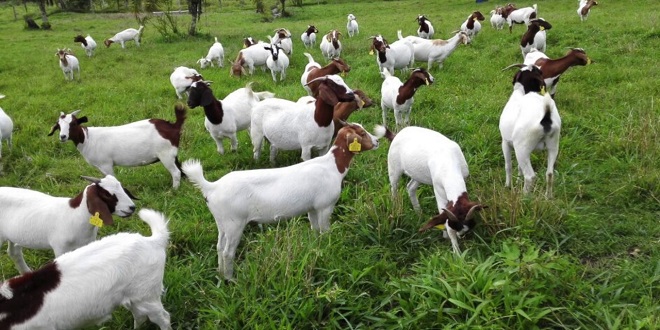Why
goat identification is necessary?
It is necessary for record keeping, registration, and proof of ownership. The distinctive marking helps in identifying goats merely by sight. Identification becomes more useful in case of goat breeds with identical coloring such as Saanens, Toggenburgs, Oberhaslis, and Boers. Registered goats have permanent identification.
- Methods
of identification
There are various methods of
identification. The most common is imprinting
a tattoo on most of the breeds. It is permanent but difficult to read.
Registered animals can be identified with a registration tattoo as a substitute
of the ear tag. The tattoo is either the same as the herd ID allocated by the
USDA or the goat is accompanied by a copy of the registration certificate with
the current owner mentioned in it.
These are generally used on meat
goats, but there is a chance to be lost, especially if the goat is in brushy
areas. Owners sometimes use these ear tags with built-in radio frequency
identification (RFID). It is mandated by the FDA that these RFID chips can’t be
inserted into the body of food animals as these chips can move to other body
location and mighty be risky for humans. In Europe, such chips are first
encapsulated in ceramic bolus, then inserted in the rumen. However, this method
is not approved in the US. An electronic reader is needed to read these RFID
chips, but if a reader is not available these tags have numbers which can be
read visually as well.
- Scrapie
eradication program
Scrapie tag is placed in the ear. At
present, these tags are distributed for free by the national eradication
program; they must stay inside the ear. The tag consists of a number of digits.
Few dairy goat owners put tags on plastic chains around a goat’s neck. The
reason for using a plastic chain is that if unfortunately the chain gets stuck,
it will break rather than choking the goat. As a part of this program, the
producers are requested to get premises identification number. Though this is
at present voluntary, in future, as part of the National Animal Identification
System it will be a mandatory thing to have a premises identification number.
Few owners use ear notches for goat identification.
There are various methods for
temporary goat identification. These consist of the use of spray chalk, colored
spray (like purple wound spray), and wax marking crayons. Paint branding can
also be used a little— in this a special paint to the animals’ body this by
using a small numbered branding-iron set [Goat ID]
It is important to keep accurate
inventory records. The owner should not
buy goats of age that may be used for breeding or goats over 18 months of age
for any reason except they have official ID. Before any buying or selling, they
need to be officially identified. The owner should purchase tags produced by
approved tag companies only. The standards are laid down by the USDA.
If an official tag is lost, another
official tag should be put back ASAP and record that new number. Record the
previous tag number or the name and address of the herd of origin if required.
The record should be kept for 5 years after the animal dies or is no longer
owned by the same owner.
How
to retain ear tag and safety from Infection/tissue reaction
- Kids lesser than 6 months should be
tagged. - Clean the tag, when ears are
dry. - If not required then avoid tagging
in humid summer months or in wet conditions.
